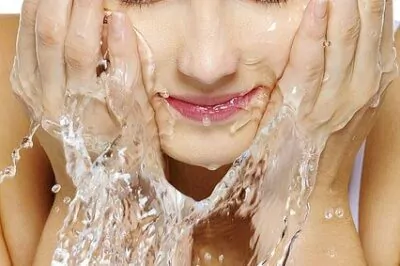Table of Contents[Hide][Show]
You know that creamy, sudsy feel you get with many cosmetic products, like lotions, moisturizing creams, cleansers and shampoos? Unfortunately, that nice tactile feeling is often created by a potentially dangerous chemical called “diethanolamine,” which on its own can be irritating to skin, but when contaminated with other compounds, can actually become carcinogenic.
What is Diethanolamine?
Diethanolamine, or DEA, is synthesized from ethylene oxide and ammonia, and is used as a “wetting agent” to create a thick lather or creamy consistency when the product is mixed with water or spread onto the surface of the skin. The product is also used in the manufacture of textiles, pharmaceuticals, and herbicides.
Besides being potentially irritating to skin, DEA by itself (in the doses used in cosmetics) isn’t necessarily harmful. The danger occurs when it reacts with other ingredients in the formula, or when it’s applied to the skin. At that point, it has the potential to create a potent carcinogen called “nitrosodiethanolamine (NDEA).” This chemical has been linked to cancer in animal studies, and the International Agency for Research on Cancer (IARC) has stated that there is sufficient evidence of a “carcinogenic effect.”
One study, for example, published in Nature, showed that high doses of NDEA caused liver tumors in animals, while other research has linked the chemical with cancers in the skin and thyroid. Even the FDA noted a 1998 study that found an association between DEA topical application (on the skin) and cancer in laboratory animals.
How Does Diethanolamine Change to NDEA?
A cosmetic product may pick up NDEA as a contaminant through the manufacturing process. In this case, it’s hidden from view—it doesn’t show up on the ingredient label, and you wouldn’t know it was there unless you performed a chemical analysis on the product itself.
Even if the cream, lotion, or cleanser is safe when you get it home, the degradation of certain chemical preservatives can release nitrites when exposed to the air, which can then interact with DEA to form NDEA. By the way, other chemicals called “monoethanolamide” (MEA) and “triethanolamine” (TEA) are similar to DEA and can also react to produce carcinogenic nitrosamines.
How to Spot It
The only way to protect yourself from possible exposure to NDEA is to avoid those products that contain ingredients known to become contaminated with it. Read labels, and avoid those that include any of the following:
- DEA/MEA/TEA
- Deithanolamine, monoethanolamide, triethanolamine
- Cocamide DEA, cocamide MEA
- DEA oleth-3 phosphate
- DEA-cetyl phosphate
- Lauramide DEA
- Linoleamide MEA
- Myristamide DEA
- Oleamide DEA
- Stearamide MEA
- TEA-lauryl sulfate
Just in case you were wondering, Annmarie Gianni skin care products contain no DEA, MEA, or TEA!
Have you started to avoid these potentially dangerous chemicals? Please share your experience.








Why limit this to Personal Care Products?Requiring an entire idusntry to remove certain chemicals is a tedious way of encouraging compliance. Why not require packaging that clearly states the harm within?If you ask for chemicals to be removed others will have to take their place. Please, inform us of the risks involved.
[…] Diethanolamine (DEA) DEA zelf is behalve licht irriterend voor de huid, niet echt schadelijk, het gevaar zit ‘m er in dat het kan reageren met andere stoffen die in het product zitten en dan onstaat er de kankerverwekkende stof nitrosodiethanolamine (NDEA). Uit een Amerikaans onderzoek is gebleken dat 42% van alle cosmetica producten is besmet met NDEA, met name shampoos (Bron: Mercola en AnnMarie Gianni) […]